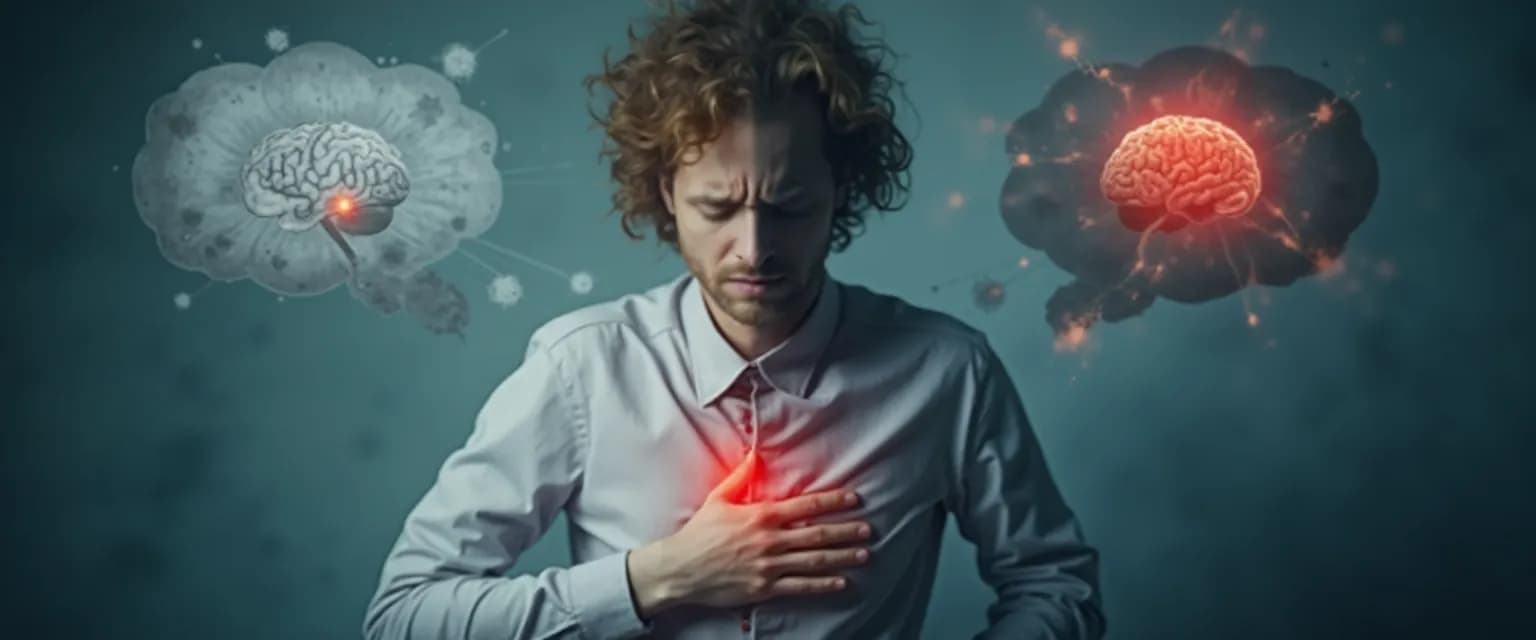Recognizing Physical vs Mental Severe Anxiety Symptoms: A Complete Guide
Feeling like your heart might beat out of your chest, or your mind is spiraling with worst-case scenarios? You're experiencing severe anxiety symptoms, and you're not alone. Approximately 19.1% of U.S. adults experience anxiety disorders annually, with many reporting both physical and mental manifestations during intense episodes. Understanding the difference between these symptom types is crucial for effective management and finding relief when anxiety strikes.
Severe anxiety symptoms occur when your body's fight-or-flight response activates intensely, even without actual danger present. This ancient survival mechanism floods your system with stress hormones, creating a cascade of physical anxiety reactions while simultaneously affecting your thought patterns. Learning to distinguish between physical sensations and mental symptoms empowers you to apply the right techniques at the right time.
The brain-body connection explains why anxiety manifests in such diverse ways. Your amygdala (emotional processing center) doesn't differentiate between physical threats and psychological stress, triggering the same physiological responses regardless. This is why severe anxiety symptoms can feel so overwhelming – they impact your entire system simultaneously.
Identifying Physical Severe Anxiety Symptoms in Your Body
Physical severe anxiety symptoms result directly from your sympathetic nervous system's activation. When anxiety strikes, your body releases adrenaline and cortisol, preparing you to face a perceived threat. This biochemical response creates immediate, noticeable changes throughout your body.
Common physical severe anxiety symptoms include:
- Rapid heartbeat or palpitations (feeling your heart racing or skipping beats)
- Chest tightness or pain (often mistaken for heart problems)
- Shortness of breath or hyperventilation
- Muscle tension, especially in the neck, shoulders, and jaw
- Digestive distress (nausea, "butterflies," or stomach pain)
- Sweating, chills, or hot flashes
- Dizziness or lightheadedness
To differentiate anxiety-related physical symptoms from other health concerns, notice their timing and triggers. Physical severe anxiety symptoms typically appear suddenly during or after stressful situations and may subside once the stressor passes or emotional regulation techniques are applied.
Try this quick body scan technique: Close your eyes and mentally travel from head to toe, noticing areas of tension, discomfort, or unusual sensations. This heightened body awareness helps you recognize physical anxiety signals before they intensify, giving you the opportunity to address them early.
Recognizing Mental Severe Anxiety Symptoms in Your Thoughts
While physical symptoms grab immediate attention, mental severe anxiety symptoms can be equally debilitating. These cognitive and emotional patterns directly impact your perception, decision-making abilities, and overall sense of wellbeing.
Watch for these common mental severe anxiety symptoms:
- Racing thoughts that jump rapidly between concerns
- Catastrophizing (assuming the worst possible outcomes)
- Excessive worry that feels uncontrollable
- Difficulty concentrating or mind going blank
- Feeling overwhelmed or that things are "too much"
- Irritability or emotional sensitivity
- Sense of impending doom or danger
The key difference between normal concern and mental severe anxiety symptoms lies in their intensity, duration, and impact. Occasional worry serves a purpose – it helps us prepare and solve problems. Anxiety-driven thoughts, however, persist despite evidence to the contrary, interfere with daily functioning, and often involve irrational thinking patterns.
A practical approach to identifying mental anxiety patterns is the "thought check" technique: When anxiety rises, pause and ask, "Is this thought based on facts or feelings? What's the actual evidence for this concern?" This simple reality-testing helps distinguish between productive problem-solving and anxiety-driven thinking.
Effective Ways to Address Your Severe Anxiety Symptoms Today
Once you've identified your specific severe anxiety symptoms, you can apply targeted techniques for each category. For physical symptoms, try diaphragmatic breathing (slow belly breathing) to activate your parasympathetic nervous system, which counteracts the fight-or-flight response. Progressive muscle relaxation also effectively releases physical tension stored in your body.
For mental severe anxiety symptoms, thought challenging works wonders. When catastrophic thoughts arise, ask yourself: "What's the most likely outcome? What would I tell a friend with this worry?" This perspective shift interrupts anxiety-driven thought patterns.
The power of recognizing your personal severe anxiety symptoms pattern is that it allows for precision in your response. Physical symptoms might require body-based approaches, while mental symptoms respond better to cognitive techniques. Ready to build your personalized anxiety management toolkit? Start by tracking which severe anxiety symptoms appear most frequently for you, then match them with the appropriate strategies for relief.




